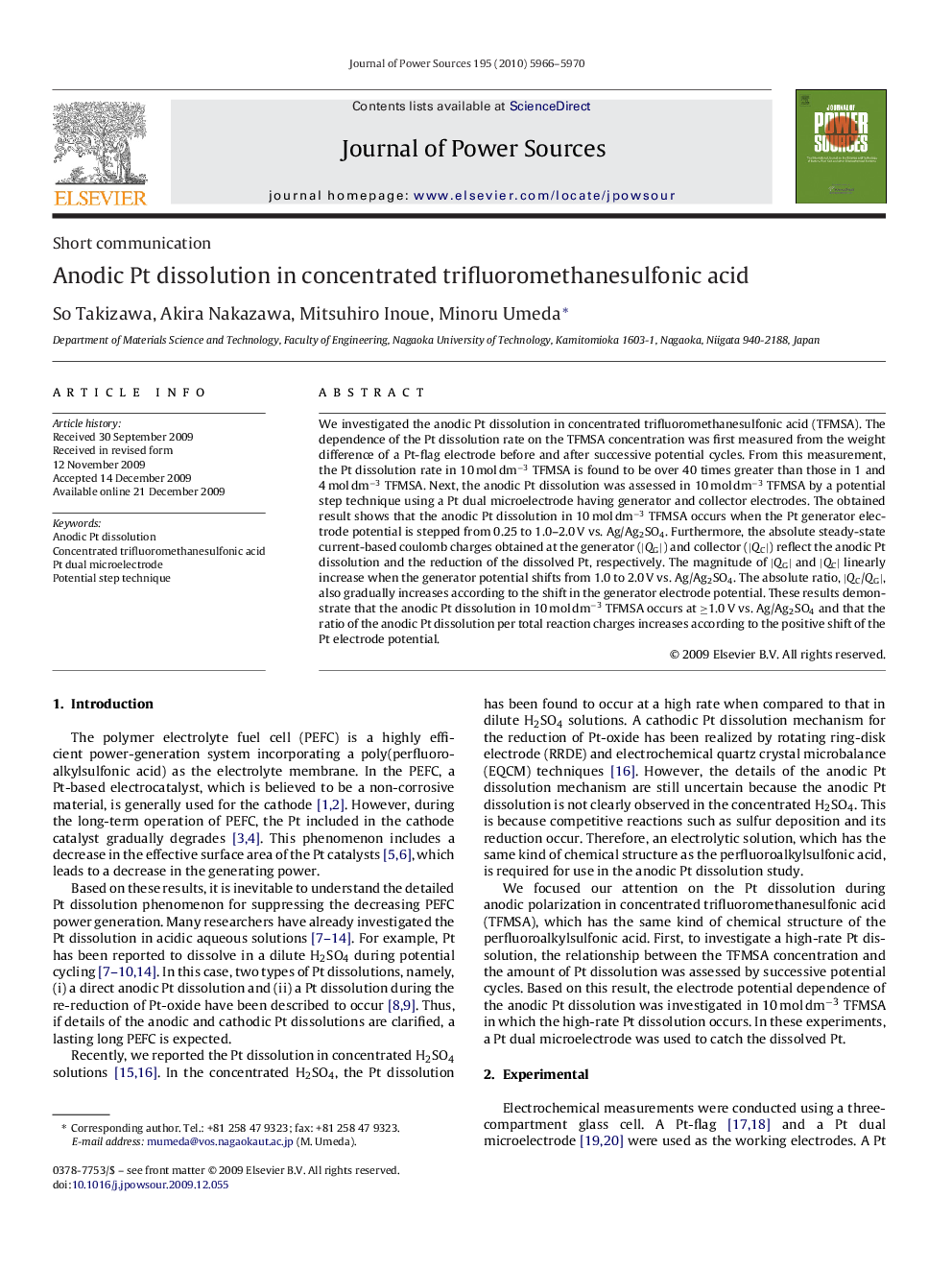| Article ID | Journal | Published Year | Pages | File Type |
|---|---|---|---|---|
| 1288989 | Journal of Power Sources | 2010 | 5 Pages |
We investigated the anodic Pt dissolution in concentrated trifluoromethanesulfonic acid (TFMSA). The dependence of the Pt dissolution rate on the TFMSA concentration was first measured from the weight difference of a Pt-flag electrode before and after successive potential cycles. From this measurement, the Pt dissolution rate in 10 mol dm−3 TFMSA is found to be over 40 times greater than those in 1 and 4 mol dm−3 TFMSA. Next, the anodic Pt dissolution was assessed in 10 mol dm−3 TFMSA by a potential step technique using a Pt dual microelectrode having generator and collector electrodes. The obtained result shows that the anodic Pt dissolution in 10 mol dm−3 TFMSA occurs when the Pt generator electrode potential is stepped from 0.25 to 1.0–2.0 V vs. Ag/Ag2SO4. Furthermore, the absolute steady-state current-based coulomb charges obtained at the generator (|QG|) and collector (|QC|) reflect the anodic Pt dissolution and the reduction of the dissolved Pt, respectively. The magnitude of |QG| and |QC| linearly increase when the generator potential shifts from 1.0 to 2.0 V vs. Ag/Ag2SO4. The absolute ratio, |QC/QG|, also gradually increases according to the shift in the generator electrode potential. These results demonstrate that the anodic Pt dissolution in 10 mol dm−3 TFMSA occurs at ≥1.0 V vs. Ag/Ag2SO4 and that the ratio of the anodic Pt dissolution per total reaction charges increases according to the positive shift of the Pt electrode potential.
